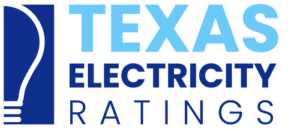
A Chilly New Year’s Eve in Dallas might mean a colder winter ahead.
Can you afford your current electricity rates?
What will happen to my Texas electric bill?
Homes in Dallas and north Texas might ring in the coming New Year with their furnaces.
Night time low temperatures in the low 20s and a daytime high of only 33°F will bring a very wintery start to 2018. How long the cold will last is not exactly certain, yet.
For some households, a high electric bill is the last thing they need, especially after this summer’s brutal hurricanes. After all, according to NOAA’s earlier forecasts, Texas was supposed to be basking in above-average warmth this winter. What’s up with all the cold? How long is this going last? What’s going to happen to my Texas electric bills?
A weak to moderate La Niña has formed in the Pacific. La Niñas usually affect North America by creating a blocking high pressure ridge in the north Pacific. The Polar Jet stream bends around that ridge so that it swoops southwards along the Canadian Rockies. Then it heads eastward over the Great Plains, veering northeasterly as it passes the Great Lakes and then heads over New England and the Canadian Maritime Provinces for Greenland. La Niña winters tend to be colder in the northern US plains but dry and warm the southwest, the Gulf coast, and Texas. That is, usually.
Currently, there is lots of warm high pressure situated over the Rockies and Utah. East of this, a low pressure frontal boundary running from the Gulf of Mexico, over Florida, and eastwards over the Atlantic there has created is a trough which is letting arctic air flow into it, covering the eastern half of the country.
This trough and ridge pattern is likely to stick around for the next two weeks, bringing cold weather and increased chances for above average rain fall to Dallas, Fort Worth, and the rest of Texas. Afterwards, it’s thought warmer temperatures should move back in. But, there’s some uncertainty about that because of how different weather mechanisms might interact over the first two weeks of January:
- First, there’s that La Niña messing with the Polar Jet Stream that brings the cold air southward. Compared to other La Niñas, it’s typical for that cold air to stay over the northern plains, upper Mississippi, Ohio Valley, and New England states. Bear in mind that bitterly cold weather in these northern state affects the supply and price of natural gas —which fuels 44% of electric powerplants in Texas.
- Next, the Arctic Oscillation (AO) is currently sliding into a negative or weak phase which will let arctic air swoop south into the upper plains and, because of that trough, flow further southwards. That’s where the cold air is coming from for New Year’s day. If the AO grows positive, the Polar Jet Stream will retreat further north, taking the cold air with it. The problem is that the AO is difficult to predict more than two weeks in advance so that leaves a lot of uncertainty about what’s going to happen to with the trough and all the cold air inside it.
- Lastly, there’s the Madden-Julian Oscillation (MJO). The MJO is a two-phase disturbance in tropical convection that moves along the equator from west to east. The MJO travels completely around the globe in 30 to 60 days. So far this winter, the MJO was active in December and there is evidence that it still is active — but how active is unknown. NOAA states “an MJO over the Indian Ocean would favor ridging and warmth over the eastern CONUS with troughing and colder temperatures over the western CONUS…” Now, if that sounds too amazing to be true, remember that the MJO is a convective pattern that cause a lot of rainfall in one part of the globe while suppressing rainfall much, much further to the east. Therefore, stormy weather over India causes convection which moves lots of air eastwards into the upper atmosphere. This air grows dense and is forced to sink. As it does, so, it warms and dries, suppressing local storm development. Ideally, all that warm dry air will descend onto the southern U.S. and gradually move eastward.
IF the MJO does emerge in January, NOAA predicts that it could change the weather pattern and bring warmer conditions to the Gulf and east coasts late in the month. If it’s strong enough, it could bring additional warmth to some midwestern states as well.
So, as you fire up your Texas New Year, hope the MJO gets it mojo going because it could make your electric bill cheaper by the end of the month.
To see how this will effect your electric bill, check out “Texas Winter Forecast 2017-18 Part 2”
